Mmabatho Montsho’s exhibition at the Women’s Jail at Constitution Hill, is titled Manyano, an isiXhosa noun of the verb ukumanya, which refers to the act of congregating or uniting.
In this context, it refers to the Methodist Women’s Prayer and Service Union in South Africa — as it appears on the pin they wear to secure their white bibs. In addition to being a home for bo mme ba seapharo (women of uniforms), by hosting weekly prayer meetings on a Thursday afternoon, the union aims to encourage missionary work while generating funds for it.
Montsho (35) is an actress, director, painter and healer. She says she has always painted to resolve struggles through visual storytelling.
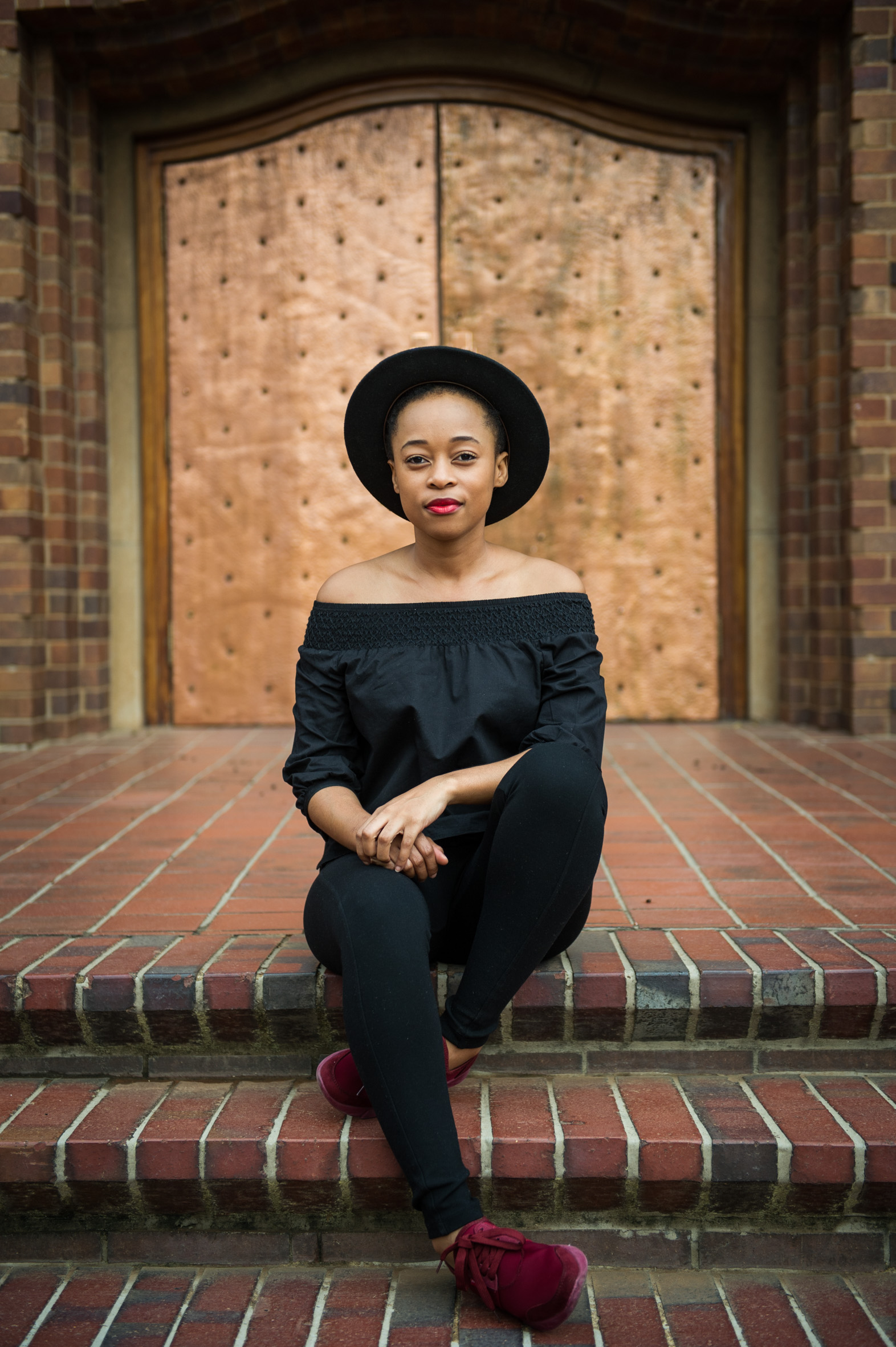
[A versatile artist: Mmabatho Montsho (Photo: Delwyn Verasamy/ M&G)]
“These artworks were inspired by a compelling vision on manyano women that came to me late one night. Being a storyteller, my first thought was that it was a call to script. It was only after sketching the women that I found respite from the haunting of the vision. Sketches became oil paintings, and so it continued,” reads the statement that accompanies Montsho’s exhibition.
As a sangoma, she sees the visions as a call for a new form of expression by the ancestors of the Methodist Church.
“We are hard pressed on every side but not crushed; perplexed but not in despair; persecuted but not abandoned; struck down but not destroyed.” — 2 Corinthians 4:8-9
Women were not allowed to hold leadership positions in the church and so they created manyano. The establishment of these prayer groups did not sit well with the church.
“They were militant in their pursuits to define their own ownership with God and its expression within the community,” wrote Montsho. “This visibility inspired women from different churches, who also formed their own prayer groups.”
To celebrate women’s defiance of the patriarchal structure of the church, Montsho depicts the praying women in their everyday routines, performing tasks such as commuting, washing their uniforms, attending meetings and being in church.
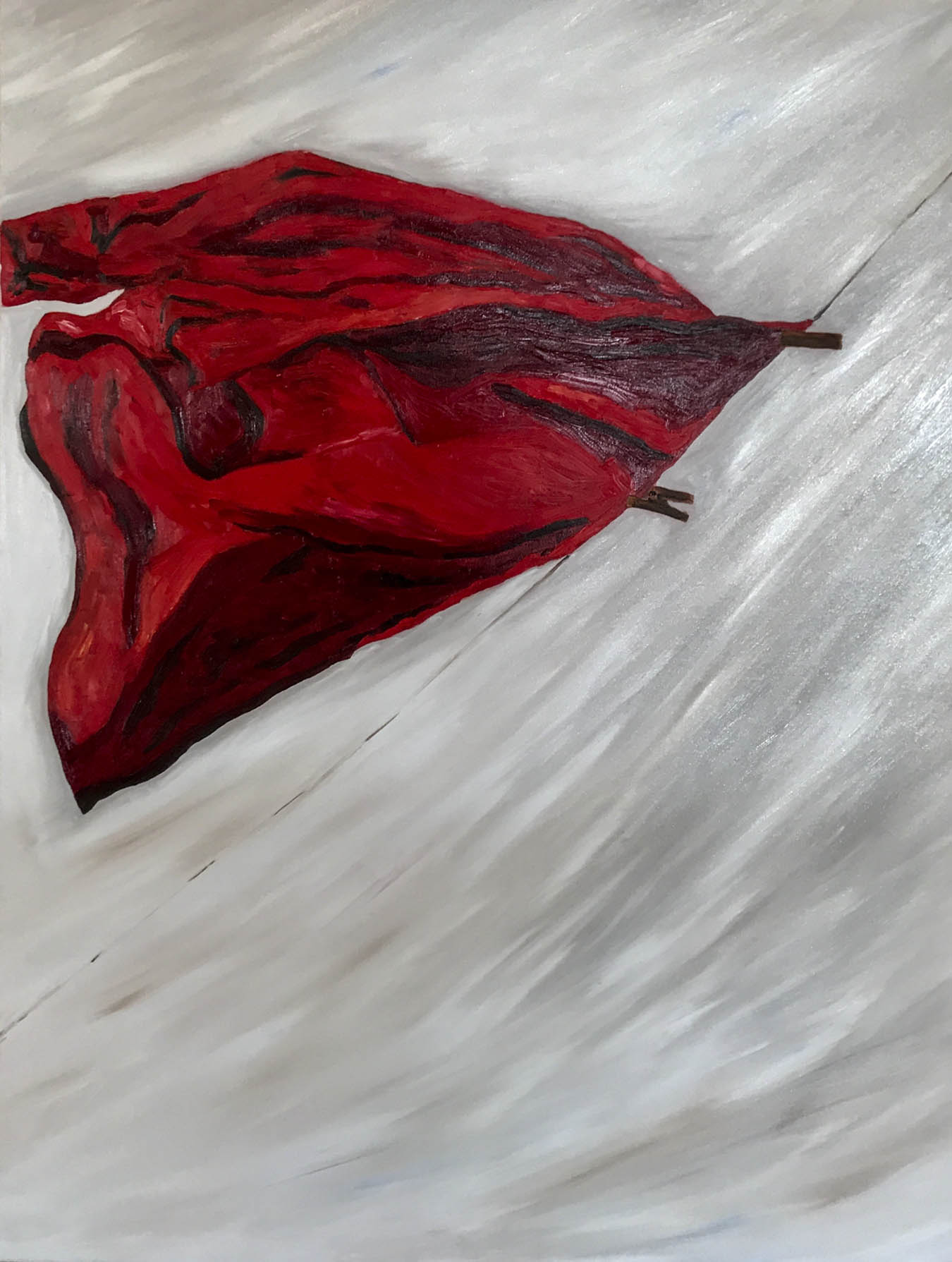
[A Methodist Church women’s uniform sits on the line to dry in a piece from ‘Manyano’ (Mmabatho Montsho)]
Montsho’s subjects also include a sangoma and women from the African Methodist Episcopal Church and the Zion Christian Church. By so doing, it is suggests that manyano is about how the spiritual sovereignty of women is an everyday occurrence.
Gaisang Sathekge, the exhibitions and events curator of Constitution Hill, said: “Manyano is about women who pray, not only for themselves but also for the communities they serve. They are the guardians of society and their spiritual presence also serves as a voice of activism against the violent atrocities committed on women and children in our society.”
It was for this reason that the exhibition coincides with Women’s Month.
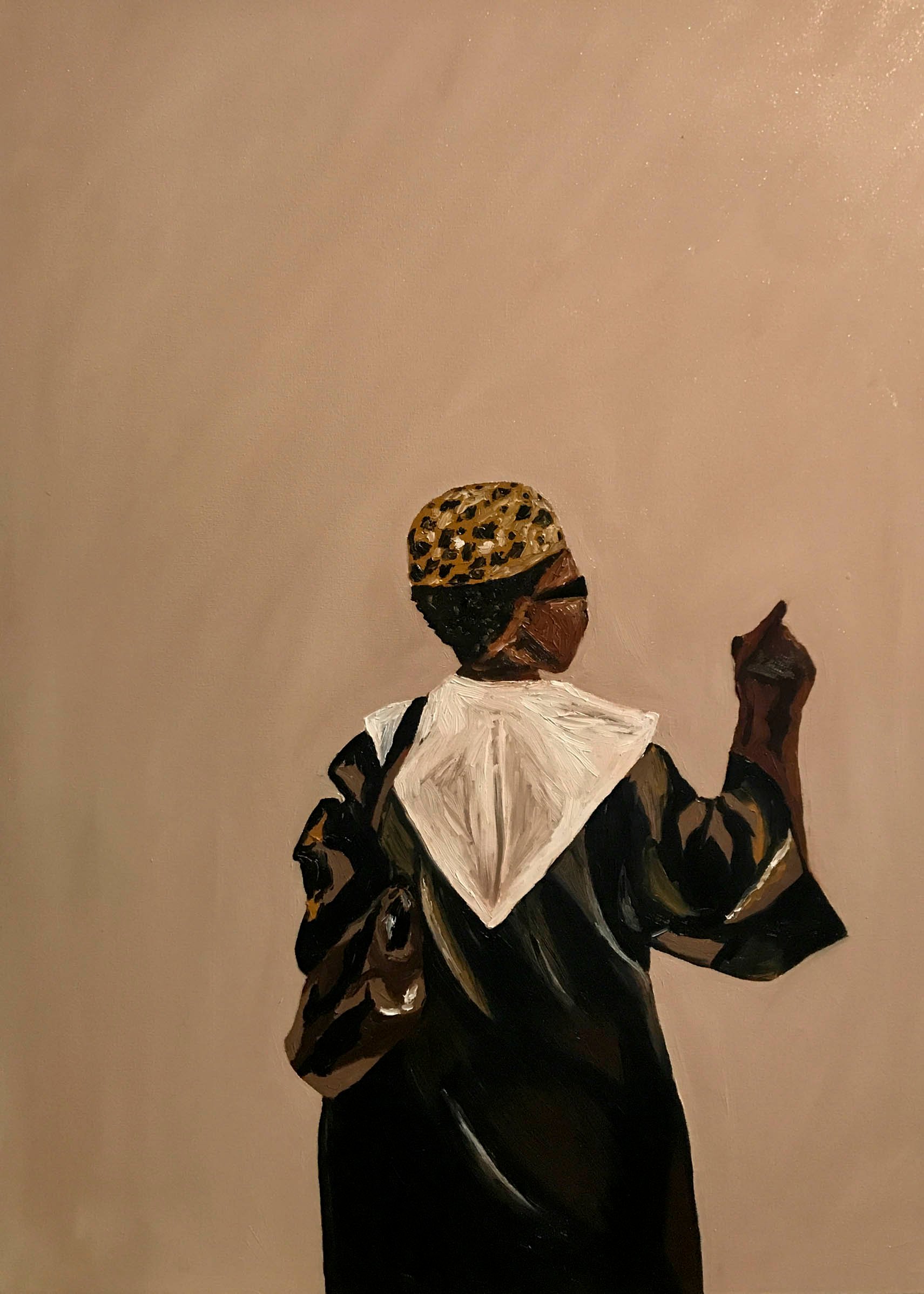
[While the exhibition focuses on women from the Methodist church, it includes women from other denominations (Mmabatho Montsho)]
Growing up in a religious family and being a sangoma, Montsho, like many South Africans, has adopted a Western religion while also practicing African spiritual customs. People may have expected Manyano to reflect other religions and spiritual practices.
Montsho’s exhibition is in Section Two (Cell Two) of the Women’s Jail. It was previously a large cell that held up to 70 women and was across the foyer from the jail’s isolation cells. Some of the women who were isolated include Nolundi Ntamo, Yvonne Ntonto Mhlauli, Sibongile Tshabalala, Nikiwe Deborah Matshoba, Lilian Keagile and Albertina Sisulu.
Today, interviews with these women can be heard and it sounds like a group of women praying. Their voices unintentionally create an appropriate soundscape for Manyano.
“The Women’s Jail is a historical place layered with the struggle of women who were incarcerated in this prison,” Sathekge said. “Manyano depicts the strength and resilience of the prayer women of the Methodist church, of which Winnie Mandela was a member and also a former prisoner here. The presence of these paintings in the jail is a powerful symbol of triumph.”
The exhibition is made up of 19 paintings and an installation that collectively populate the space with earthy browns, reds, greys, blacks, yellows and quiet blues
In each painting, the women are not posing for portraits. Instead they are in motion, at work and tired but not wavering. Although the subjects are seen performing tasks in their homes, churches or on the road, Montsho isolates the figures from their contexts. This, with the addition of each painting’s respective name, elevates stills of mundane tasks to a divinity.
In Song of Songs, a group of women read from the Bible while seemingly being cradled in a black nothingness, which speaks to the alienation of women in the church but also to the solace they find in one another through their shared faith.
Montsho pays attention to the creases in their uniforms created by movement, their slight wrinkles and laughing lines. None of the women looks into the viewer’s eyes. Instead, they are often seen with their heads bowing downwards, not in submission but in prayer, meditation and thought. And even though the lines on their faces, bowed heads and slightly hunched backs may portray a form of fatigue, the consistency of their presence shows their undying need to exist on their own terms.
In Church Square and Ba Babedi, ba Bararo, the subjects hold umbrellas to shelter themselves from elements that have been stripped away and replaced by solid backgrounds created by Montsho’s repetition of circular brush strokes. The women are not bothered by the elements; instead they seem to weather the literal and figurative storms with grace.
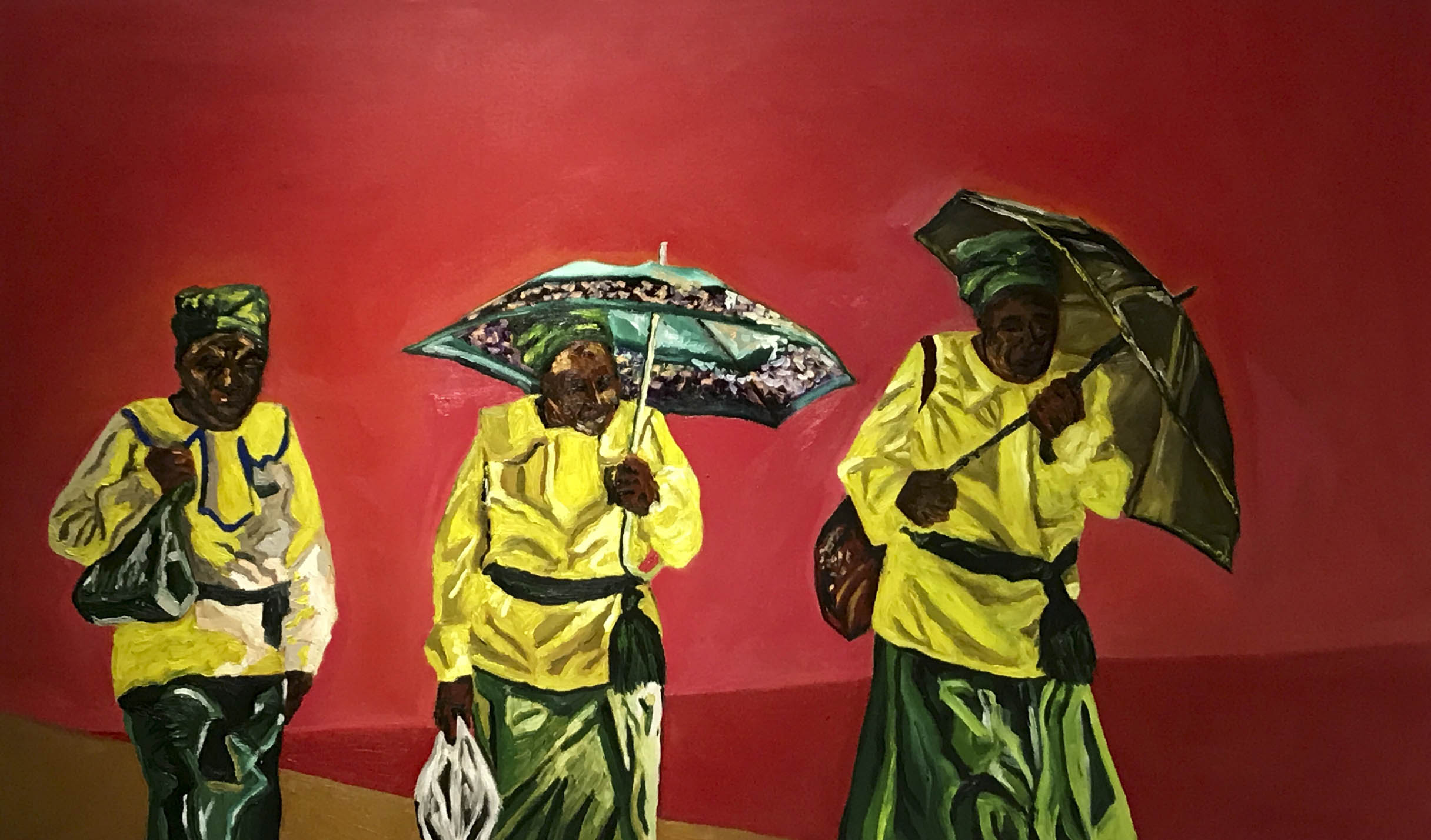
[Ba Babedi, ba Bararo from Manyano (Mmabatho Montsho)]
Apart from the women, viewers are encouraged to consider the importance of objects associated with manyano women such as their uniforms, Bibles, candles and tea. This is especially evident in Sekoto and Barwetsana. In Sekoto, a Bible, a manyano woman’s hat and candle are on a chair which wears the uniform’s jacket. This was inspired by Gerard Sekoto’s 1946 painting, Mine Boy. In Barwetsana, the uniform almost floats in the foreground because Montsho has painted the young women as silhouettes in an identical colour to the painting’s background.
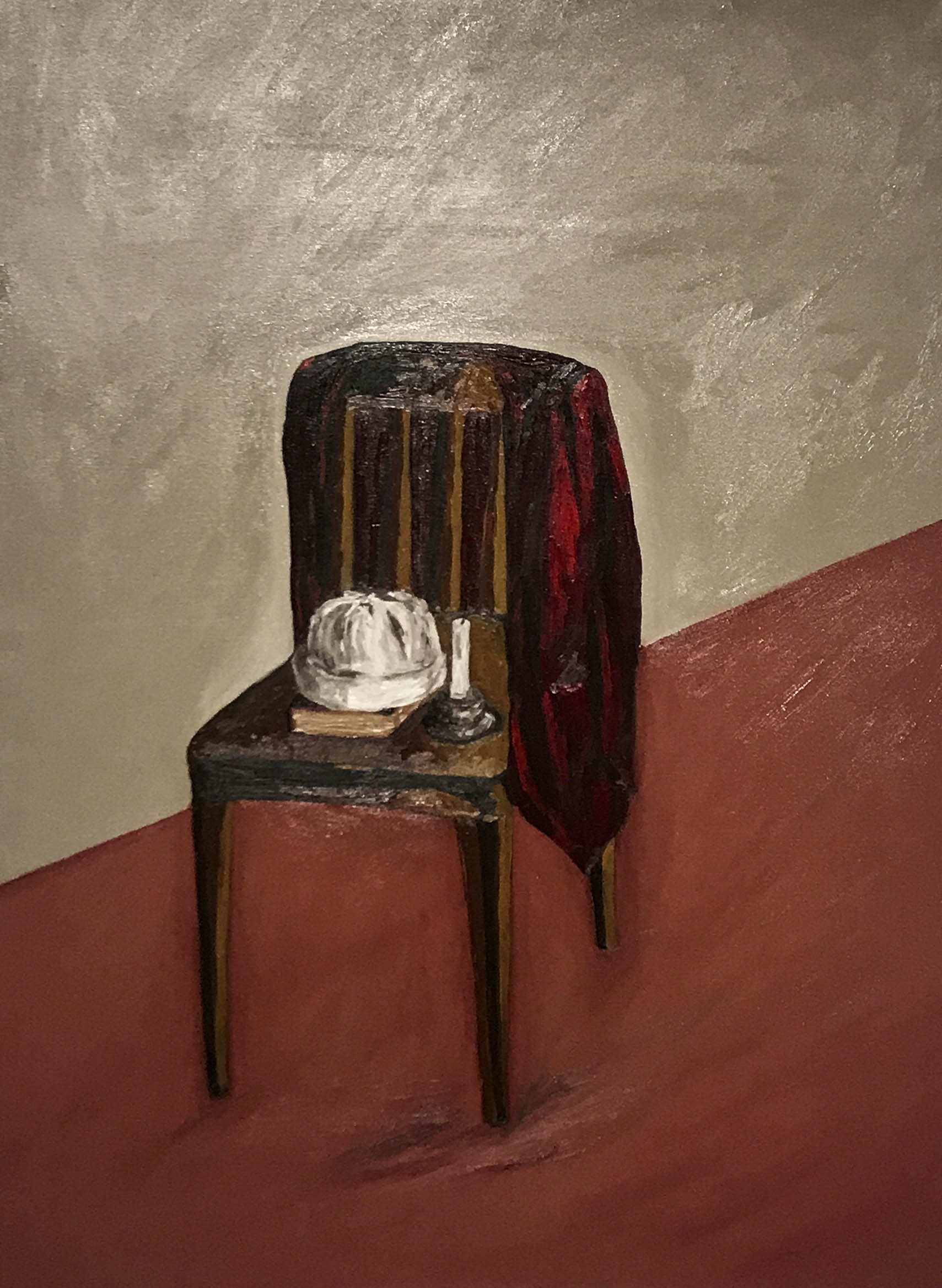
[Still Life: ‘Sekoto’ was inspired by a Gerard Sekoto painting (Mmabatho Montsho)]
The use of a uniform in South African churches was established by missionaries to differentiate the converted from the heathens. For the Methodist Church, the colours were black, red and white. The black skirt, socks and shoes represented blindness, the red jacket blood and the white bib and hat enlightenment.
“In short, I once was blind, but through the blood of Christ I now see. The double meaning of liberation through blood of Christ intrigues me whether it is the blood of Christ, or the blood of our people — black women in particular — shed in pursuit of liberation. I am also intrigued by their commitment to wear their symbolic blindness without shame,” wrote Montsho.
Manyano celebrates women in the church by telling the story of defiance and sisterhood that can exist within the Christian faith, a perspective known mostly by black women; a perspective that only an artist like Montsho, who grew up in the environment, can depict with legitimacy.
The artistic focus on women in church is minimal, with the exception of work such as photographer Sabelo Mlangeni’s Umlindelo wa Makholwa. Montsho’s Manyano plays a vital role by positioning women’s fellowship and spirituality in the white cube space.